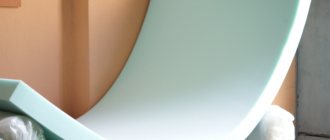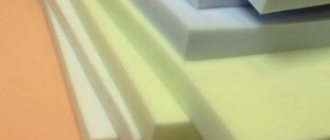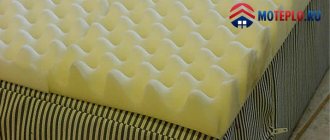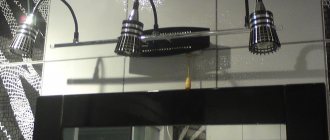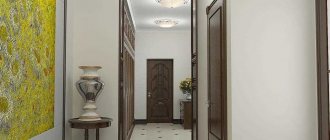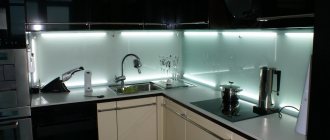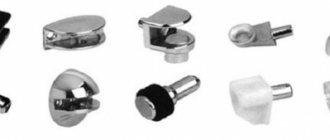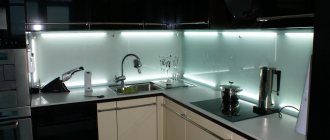The modern furniture industry uses many types of raw materials of both natural and artificial origin as fillers for sofas. But most often polyurethane foam is used, which is better known to a wide range of consumers as foam rubber. This material has been popular since time immemorial; over the years of its existence it has undergone significant changes and has been improved as much as possible. Sometimes manufacturers combine foam rubber for a sofa with other analogues - padding polyester, latex, felt, but more often they use combinations of one filler of varying degrees of density. What are the advantages and disadvantages of polyurethane foam, how do they affect the functional features of furniture, should be understood by every user who is in search of the ideal sofa.
Types by density
The higher its density, the longer the service life. By the letter indicators that appear on the label, you can navigate the types of foam rubber. Numerical values indicate density indicators (first digit), subsequent ones indicate compression stress indicators.
Soft
Foam rubber is suitable for arranging sleeping places (sofas, beds, armchairs). Its approximate density ranges from 25 to 45 kg per 1 m3. Good softness, elasticity and firmness ensure comfort while sleeping. When sitting for a long time or being in one position on such a sofa, there is no feeling of discomfort; You can relax in your sleeping area.
Soft material is marked with HS symbols. This mark is attached to the packaging.
Attention. The product is quite pleasant to the touch, but not durable. You have to constantly repair or completely change the entire canvas.
Standard
Manufactured on a polyol base. Additional components can be included to obtain the required strength, density and elasticity. Most often, this type of foam is used to decorate armrests and headrests in upholstered furniture. Density – 25-30 kg per 1 m3.
Advice. To choose a standard foam rubber, you should find the ST marking on the label, but focus on the numerical values. They are indicated to show the buyer the density and compressive stress.
The standard version is the most common on the market and can be used for restoration or self-assembly. The only significant drawback is its low durability: foam rubber cannot withstand heavy loads. You cannot operate it with increased loads (it will not withstand more than 90 kg).
Hard
Not suitable for filling baby cots. This is a rather unpleasant option for relaxation. But great for people who prefer hard surfaces to soft ones. Density – from 25 to 40 kg per 1m3. Marking: HL mark.
Ideal for sofas that are constantly used for sleeping. Better to sleep than to use it as a resting place for everyone.
Increased rigidity
Special polyols give the product greater rigidity. They multiply the effort, but this indicator depends on the components included in it. Density – 30 kg per 1 m3. An excellent material for making mattresses and sofa covers. With a higher density value, the furniture can withstand higher loads. Designation - EL.
There is no weight limit. This is a comfortable option for long and deep sleep. If it is more convenient to apply an additional layer of foam on top, the surface will become softer and more comfortable for sleeping in any position.
Highly elastic
It has a density of more than 30 kg per 1 m3 and can withstand a weight of 100 kg. Most often it is used to produce high-quality mattresses. The material has incredible load-bearing capacity and initial rigidity. High elasticity is marked on the packaging with the HR label.
Advice: An exclusive option, quite expensive. These models are used for the production of luxury furniture, as the list includes the highest quality fabrics.
Highly elastic with increased comfort
Comfortable furniture is made from foam rubber with a density of 30 to 55 kg per 1 m3. This is a soft material. You can relax, sleep, and sit comfortably on it. To select a highly elastic product with greater comfort, you need to look for the HR brand label with an asterisk.
Highly elastic foam with increased comfort belongs to the group of materials of the highest quality. It is chosen for luxurious premises, where other options simply will not be considered in the context of luxury and wealth. Sleeping on such beds is simply supernatural bliss. The same goes for quality.
Attention. Foam rubber with such characteristics is not afraid of the most serious loads, can work around the clock and always meets expectations.
Replacing filling and upholstery: step-by-step instructions
Over time, not only the frame elements and springs become unusable, but also the soft part of the sofa, and then it will also need to be replaced. Here's how to do it.
Step One: We need to evaluate the appearance of the fabric that is underneath and on top of the box spring; It can be made of felt or cotton wool. Thanks to the presence of such a coating, the springs will not push through the foam rubber and will rest against the plywood parts. When dismantling old structures, craftsmen in most cases should see the following picture. The batting cape has become deformed and lost its original appearance, so it cannot be removed. After removing this material, it is recommended to vacuum the frame to remove any remaining dust.
Old minced meat
Step two: First, the material must be placed under the spring block. For such purposes, it is not necessary to buy a new piece of fabric, because you can even wear a clean old blanket.
Place fabric under the springs and then secure the block to the frame
Step Three: Now we also need to put the material on top of the spring block. For this we will use felt. If you are away, you can use an unnecessary rug.
It is advisable to roll it out in two layers and then cut it exactly according to the design parameters. Now we must attach this material to the springs using a thick needle and thread (some craftsmen use an awl in such cases). Leave a gap of 35 cm between stitches.
Attach the material to the box spring
Step four: Now we need to lay down the foam. If the old one seems normal, then you can leave it. Replacing foam rubber includes the following steps:
- You need to buy filler about 40 centimeters thick. The better the quality of the foam, the faster it will return to its original shape when pressed, so it is advisable to choose an option with a dense structure.
- Now you need to cut a piece of foam rubber to the size of the frame and attach it using a stapler and staples.
We carefully fix the foam rubber on our structure
Step five: now you need to put a padding polyester on top of the foam rubber; if necessary, it can be replaced with another soft material. As an alternative, you can use holofiber - this material is strong and durable. The padding polyester is also attached to the frame with brackets. At the same time, it is recommended to glue it to foam rubber, since during operation it can slide. Now the structure needs to be left for several hours until the glue has completely dried, and only then can we proceed to another scene.
Application of polyester filler
Step six: we must secure the upholstery fabric. You can use the old one if it looks ok. However, many craftsmen prefer to do new upholstery to update the sofa.
If you plan to use old upholstery, you should wash it
At this stage we have to choose the material from which the upholstery will be made. To do this, consider the characteristics of the most popular types.
Table 3. Types of upholstery
Photo Description
Cotton | A natural and inexpensive material that is better suited for children's sofas. It is completely respectful of the environment and does not cause allergic reactions. The only downside is that it has a short service life. |
Jacquard | This is a very durable embossed material, but the main advantage is that it has excellent wear resistance and does not lose its original appearance even with active exposure to the sun. However, such upholstery is quite difficult to care for, and the material is quite expensive. |
Tapestry | It is a durable upholstery fabric that has been used since ancient times. It has good wear resistance, but reacts negatively to ultraviolet rays, so this sofa can only be installed in a room with thick curtains. |
Leather | The best solution would be to choose genuine leather for the upholstery of the sofa, because this is the most durable upholstery option. The main advantage is that the upholstery does not require special care and serves faithfully for many years. However, many people prefer to use synthetic leather instead of genuine leather, which is inexpensive and no less attractive in appearance. |
Herd | A material reminiscent of velvet in its structure. It is very often used for upholstery of upholstered furniture because it is environmentally friendly and does not require special care. |
Chenille | A soft material that has gained particular popularity in recent years. It has good wear resistance, does not stretch, and retains its bright color for a long time. |
To cut new upholstery, you need to remove the old covers, tear them at the seams, and then iron them, and then make a new upholstery on the base.
Now we have to secure the sofa upholstery with a stapler. In this case, the fabric should be slightly stretched.
We repair upholstery
To preserve the sofa upholstery, it is recommended to sew a set of removable covers; can be removed and washed at any time
Can you list all the names of polyurethane foam so that I can no longer be deceived?
Certainly! Get it!
- Foam rubber
- Foam
- PPU
- Latex foam
- Foam
- Highly elastic foam
- Vegetable foam
- Foamed corn oil
- Artificial latex
- Waterlatex
- Tiger touch
- Wisco shawm
- Sloth
- Memory
- Memorylatex
- Smart foam
Features of choosing foam rubber
The foam sheet is selected mainly based on two indicators: thickness and density. The layer thickness should be at least 4 cm, and the density should be approximately 30 kg/m3. The service life of the new filling and its performance depend on these indicators. Thinner and softer ones will press easily and will soon need to be replaced again, while ones that are too dense will make the seat uncomfortably hard.
Therefore, when deciding which foam rubber to choose, pay attention to its brand: the first numbers in it indicate the density, and the last ones indicate the stiffness indicator. The service life of the furniture and the cost of filling will depend on these indicators. When you come to the store to choose foam rubber for the sofa, feel free to touch each sample and squeeze it in your hands. This will help determine the difference in stiffness and help you choose the ideal option for you.
Material stiffness is the second main indicator
The rigidity of polyurethane foam is its load-bearing capacity, and shows how well the foam compresses when exposed to external loads. To put it simply, this is an indicator of how much the foam compresses when you sit or lie on its surface. Compression directly depends on the density of the material, the number of fibers inside, providing a shock-absorbing and supporting effect. Due to the rigidity, there is a comfortable fit for a person, since with correctly selected rigidity, a person will not push the foam rubber to a rigid base.
How to replace a spring block in a sofa
Instead of a spring block, you can use types of fillers such as foam rubber, felt or padding polyester.
The first is an elastic material, provides elasticity, can serve as both a softening and a supporting product, while it is perfectly breathable and has a fine-mesh structure.
Foam rubber is a soft polyurethane foam. The name comes from the company that supplies Porolon.
The second is environmentally friendly, durable and reliable. Due to the increased strength, its service life is significantly extended.
Felt is a dense non-woven material made from natural wool.
The third is inexpensive, environmentally friendly, does not cause an allergic reaction, durable and elastic. This prevents the growth of fungus or any other harmful bacteria.
Sintepon is one of the most popular materials in the modern world. The leader among synthetic isolates.
Varieties
Sheet and roll foam rubber differ in softness and hardness. Products are:
- Soft - this type of filler can be used in furniture only in combination with a dense foam base. This is the most plastic polyurethane foam (PPU), giving increased comfort to finished products. But it should be remembered that when using the material independently, the load created cannot exceed 60 kg.
- Hard - hard, capable of withstanding heavy loads up to 100 kg.
- Increased hardness - highly rigid polyurethane foam can withstand a weight of over 100 kg.
- Elastic with increased comfort - foam rubber is best suited for upholstered furniture intended for sleeping. You can rest most comfortably on such a surface.
- Elastic with an orthopedic effect - the products are characterized by healing properties, as they reduce the load on all parts of the body.
Foam rubber with an orthopedic effect is “adapted” to each person individually, the main thing is to select the material for the consumer’s weight category.
Hard
Soft
Stages of replacing foam rubber in a sofa with your own hands
Restoring upholstered furniture is a rather unpredictable process, during which various problems can arise. For example, when you start replacing the foam, other components of the sofa may have become unusable or you may need to replace the upholstery material.
Take your time when deciding to restore your sofa. First, decide how much work you have to do. Think about whether you should limit yourself to simply replacing the foam rubber, or whether it’s better to do everything to the maximum right away.
Choosing foam rubber
To ensure that your updated sofa retains its presentable appearance for as long as possible and becomes a comfortable place to relax, you should consider several important points before purchasing foam sheets. As a general rule, foam rubber sheets are selected according to two main parameters: thickness and density.
It is recommended to use sheets with a thickness of at least 4 centimeters and a density of approximately 30 kg/m3. These indicators are the most optimal for the material used as sofa upholstery, and the service life of the foam largely depends on them. If you choose a thinner and less dense material, it will soon dry out and become unusable. On the contrary, if the foam is too dense, the sofa will be too hard and uncomfortable.
Therefore, when you come to the store to buy a material, be sure to study its characteristics. As a rule, the first digits of the brand indicate the density of the foam, and the last ones indicate the hardness. It is these parameters that not only determine the durability of the sofa, but also affect the price of the purchased material. When choosing foam rubber in a store, test it by touch and compression, so you can choose the best option for yourself.
Taking measurements
You don't actually need to take measurements since foam sheets usually come in a standard size. The width is usually 1 meter, length 2 meters. Naturally, you can adjust the material to the desired size in a workshop, but this is probably a rather pointless solution. It is much cheaper to buy several standard sheets of foam and repair the sofa. The remaining material can be easily used for other household purposes, for example, to replace the upholstery in a small chair.
First of all, about the terms.
What is now fashionable to call foam used to have another common name - foam rubber. However, at all times, the name of the material itself will be relevant and unchanged - polyurethane foam (a foamed form of polyurethane - an elastic rubber-like plastic).
Polyurethane is the undisputed hit of our century, which, due to its properties (stability, hypoallergenicity, chemical inertness, elasticity), is used in the vast majority of branches of human activity from the automotive industry to implantology.
Alternative names for polyurethane foam only confuse the consumer - polyurethane foam, latex foam, viscolatex, artificial latex, etc.
I want to understand better about brands! Can you help?
No problem!
- ST is a standard brand of polyurethane foam, the original classic, the foam that started it all. Neither hard nor soft, fluffy foam with excellent recoverability at good densities;
- EL - a reinforced grade of polyurethane foam, was invented much later, but today has taken a dominant position in many market niches, thanks to its increased rigidity;
- HL - extremely hard foam, used in conditions of increased loads and for maximum durability;
- HS is an ultra-soft foam used in low densities in headrests and armrests of furniture. In tall ones it turns into waterlatex - into jelly superelastic foam;
- HR is a highly elastic, rubber, latex-like brand. Extremely popular in mattresses for its springy elasticity.
- VE (LR) is a viscoelastic brand, memory, which is called by many names, including “smart foam that remembers you personally.”
Okay, there are a lot of numbers, but I don't understand anything about it? Is it possible somehow easier?
Before purchasing a mattress, ALWAYS find out the density of the foam used by the manufacturer. This is a guarantee of durability.
Conventionally, in the context of the mattress topic, all foams can be divided into 3 groups:
- low-density 16-25 kg/m3 (not durable in mattresses, but cheap for a one-time purchase!). Buying a mattress with such a density means that it will collapse in the coming year. As a rule, such densities do not normally last longer than 2-3 years.
- medium dense 28-35 kg/m3 (in mattresses they serve well for medium-sized sleepers). Such densities are used by self-respecting, but not the best, manufacturers. Forecast of good service - 4-7 years.
- heavy quality foams 40-60 kg/m3 (very durable comfortable foams). These are cool mattresses with a service forecast of 10+. It is with these densities that GASH primarily works.
